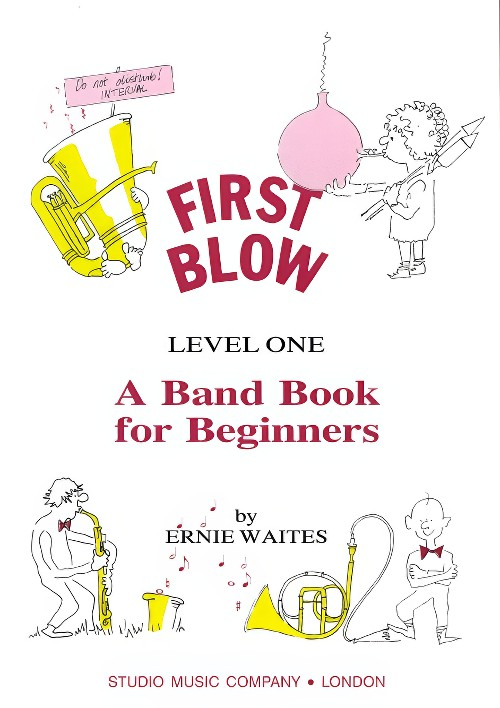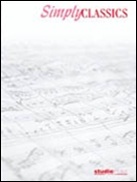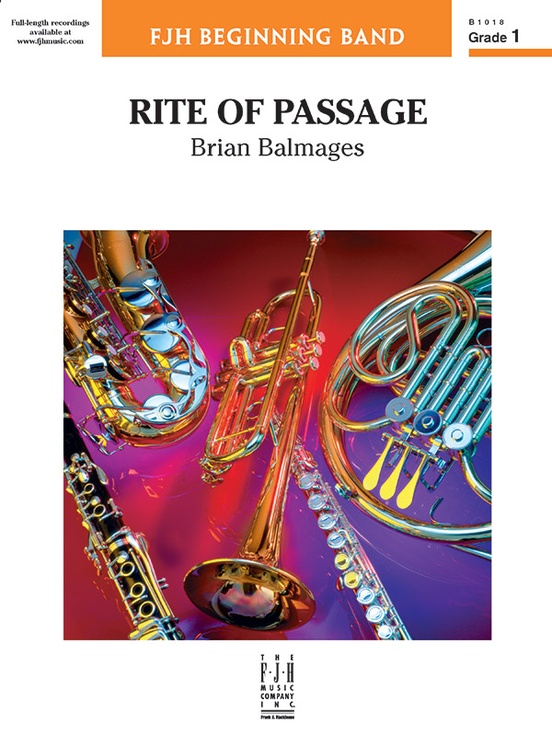Results
-
 £89.95
£89.95First Blow - Level 1 (Value Set) - Waites, Ernie
The Value Set includes a score and 1 of each part.The aim of the book is to encourage group-playing in the early stages of learning. To this end, all the parts are deliberately simple and stick strictly to the four parts in the score. In addition there is percussion part (for which instruments should be chosen for each piece) and two learner parts (flute and trombone) for players who have learned only a handful of notes.Dynamics are not given - teachers should allow the players to try the pieces at different levels.The book is suitable for wind of brass bands (of a mixture of both!) and so far as possible, an equal number of players should be allocated to each part. If there is a lack of one of the parts, this part can be reinforced on piano, playing from the score.If clarinet players of a higher standard are available, they may prefer to play the 'upper octave' parts as this will brighten the overall sound of the band.Voices:Part 1 in C, Bb, Bb Upper Octave, EbPart 2 in Bb, Bb Upper Octave, Eb, FPart 3 in Bb, Bb Upper Octave, Eb, F, C BC, Bb BCPart 4 in Bb, Eb, C BC, Bb BC, Eb BCPercussionLerner FluteLerner TrombonePieces include:MarchPolkaShipsHymnCzardasStudy No.1NightfallStudy No.2CharlestonWaltzSlapstick
Estimated dispatch 7-14 working days
-
 £19.95
£19.95First Blow - Level 1 (Piano Conductor Score) - Waites, Ernie
The aim of the book is to encourage group-playing in the early stages of learning. To this end, all the parts are deliberately simple and stick strictly to the four parts in the score. In addition there is percussion part (for which instruments should be chosen for each piece) and two learner parts (flute and trombone) for players who have learned only a handful of notes.Dynamics are not given - teachers should allow the players to try the pieces at different levels.The book is suitable for wind of brass bands (of a mixture of both!) and so far as possible, an equal number of players should be allocated to each part. If there is a lack of one of the parts, this part can be reinforced on piano, playing from the score.If clarinet players of a higher standard are available, they may prefer to play the 'upper octave' parts as this will brighten the overall sound of the band.Voices:Part 1 in C, Bb, Bb Upper Octave, EbPart 2 in Bb, Bb Upper Octave, Eb, FPart 3 in Bb, Bb Upper Octave, Eb, F, C BC, Bb BCPart 4 in Bb, Eb, C BC, Bb BC, Eb BCPercussionLerner FluteLerner TrombonePieces include:MarchPolkaShipsHymnCzardasStudy No.1NightfallStudy No.2CharlestonWaltzSlapstick
Estimated dispatch 7-14 working days
-
£85.00
MOCKBEGGAR VARIATIONS (Concert Band) - Woolfenden, Guy
Includes: Prelude, Theme and Five VariationsUnlike my other pieces for concert band, Mockbeggar Variations has no roots in any of my work for the Royal Shakespeare Company, but resulted from a commission by Robert Roscoe for the Berkshire Youth Wind Orchestra, with funds provided by the Berkshire Young Musicians Trust. Robert, on learning that I was stuck for a suitable title, and noting my penchant for the unusual, suggested the address of the Trust - Mockbeggar House - might take my fancy.The Prelude hints at the melodic and harmonic material of the Theme, which appears in the thirty-first bar, distributed between various solo instruments and small groups of players. The five succeeding variations are contrasted in mood, tempo, style and instrumentation.A large part of the score was written in a chalet high in the Swiss Alps with a continual clangour of sixteen different pitches of cow bell constantly ringing in my ears. There is no Mahlerian hint of this in the music, nor was my wife, Jane, successful in shooing the cows away or muffling their bells.....! - GW
Estimated dispatch 7-14 working days
-
 £34.95
£34.95SURPRISE SYMPHONY, The (Simply Classics Concert Band) - Burton, Denis
Franz Joseph Haydn, a prolific composer, wrote over 100 symphonies. Many of these symphonies had nicknames, including 'The Drum Roll', The Military', and this, No.94, 'The Surprise'. History tells us that Haydn, wearied of audiences losing attention at his concerts, wrote in a 'surpirse', in the second, tranquil, movement with a sudden loud chord. No doubt Haydn held the audience's attention through the rest of the performance! American Grade 1 Duration 0:44
Estimated dispatch 7-14 working days
-
 £41.50
£41.50Rite of Passage - Brian Balmages
A beginning band piece limited to a 6-note range, will have your band playing together in very little time. Utilizing smaller chamber sections as well as the full band, this is an excellent teaching piece. With no clarinets over the break and no trumpets higher than a written A, this is a very easy Grade 1 concert march. (2:00)
Estimated dispatch 3-5 working days
-
 £73.50
£73.50Three Miniatures for Winds and Percussion - Robert Sheldon
Dance like no one is watching, sing like no one is listening and live each day as if it were your last. This famous poem has many versions and is attributed to several authors, yet its simple, eloquent message speaks volumes to millions of people worldwide. The composition therefore has a first movement entitled "Joyful Dance," the second movement is "Simple Song," and the final movement is a "Celebration." Each movement is quite brief but distinctly different, each expressing the feelings inherent in the poem from which the work was drawn. (5:15) This title is available in SmartMusic.
Estimated dispatch 7-14 working days
-
 £71.50
£71.50Menuetto - Wolfgang Amadeus Mozart
A forceful brass introduction followed by a playfully lyric woodwind statement opens this arrangement for concert band of the third movement to Mozart's famous "Symphony No. 35." While remaining true to the original orchestral version, this arrangement maintains modest range and technical demands on the student musician. The "Menuetto from Symphony No. 35" is an appropriate choice for developing bands as well as more mature ensembles and would make an excellent concert or contest selection. Don't miss this opportunity for your students to perform music composed during the classical style period by one of the masters.
Estimated dispatch 7-14 working days
-
£54.99
Burlington - Charles L. Barnhouse
Note: No conductor score is published for this work. The Solo Cornet part serves as a conductor guide.Due to the era of this work, saxophone and double-reed parts are not published. Parts for Eb Horns are included; no F Horn parts are published for this work. If a C Piccolo/C Flute part was not published originally, one has been subsequently added by our editorial staff.
Estimated dispatch 7-14 working days
-
£54.99
Chautauqua - Charles L. Barnhouse
Note: No conductor score is published for this work. The Solo Cornet part serves as a conductor guide.Due to the era of this work, saxophone and double-reed parts are not published. Parts for Eb Horns are included; no F Horn parts are published for this work. If a C Piccolo/C Flute part was not published originally, one has been subsequently added by our editorial staff.
Estimated dispatch 7-14 working days
-
 £67.95
£67.95Knights Of Chivalry - Randy Navarre
One can easily imagine in the days of Castes and Kings, how this composition may spark the feeling of what it may have been like for Knights of the Kingdoms to not only protect the Lords of the Castle, but also be chivalrous to the Ladies of the Court. Dancing at the feasts and festivals, escorting the royalty to various events. Knights had much more to do than fight. They were allowed to have fun. Sometimes. Like all of our Grade compositions, its main purpose besides giving good and interesting music for young musicians to play, is that it is an opportunity for the band director to teach some aspect of music. This is a great composition for introducing eighth notes and following dynamics. No clarinet crosses the break, and the 1st trumpet's highest note is A (in the staff). Everyone plays rhythmically together. Only the drum part may vary. All chords of the diatonic scale are used to make the harmony more interesting with no accidentals.
Estimated dispatch 7-14 working days
